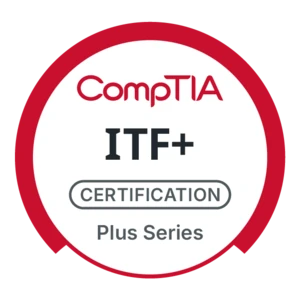IT and SOC Analyst
200 Hours / 5-6 Months, Part Time Program
This part-time Information Technology (IT) and Security Operations Center (SOC) program features expert instruction, hands-on projects, and live labs to get graduates trained in handling current attack vectors.
The cybersecurity market is projected to grow to $271 billion by 2026, reflecting the increasing importance of protecting digital assets.
Companies are in dire need of IT and SOC Analysts to safeguard their systems, detect and respond to cyber threats, and ensure compliance with security protocols.
IT and SOC Analysts play a big role in monitoring network activity, investigating incidents, and implementing measures to mitigate risks, making them indispensable in the fight against evolving cyber threats.
Enable Students to Serve as the Forefront of Organizations' Defense
Students will learn to manage IT systems, troubleshoot technical issues, and implement foundational cybersecurity measures to protect networks and data. They will gain practical skills in monitoring and analyzing system activity, identifying vulnerabilities, and responding to security incidents. They will also understand the impact of emerging AI technologies on the cybersecurity landscape. By covering both IT and cybersecurity fundamentals, the program prepares participants to handle real-world challenges in tech environments.

Learn from Industry Experts
Equip students to succeed in a rapidly expanding field with help from our network of cyber experts, instructors, hiring partners, and alumni. The IT and SOC Analyst curriculum was created in collaboration with the industry’s leading companies to make our programs as relevant as possible to the local industry’s needs, ensuring graduates will be job-ready as soon as the program ends.
Guide Students to Deliver a Professional Project
We believe that the best learning is achieved through hands-on work. Accordingly, the program includes practical exercises and lab sessions where students apply their skills to real-world scenarios.
With its multidisciplinary approach, the program’s final BIT (Bring It Together) Project will require students to integrate and demonstrate the knowledge and skills they’ve gained. Graduates will be well-prepared to tackle real-world challenges in entry-level IT and cybersecurity roles.
Who Is the Program For?
Driven and motivated individuals, with or without previous IT background, who wish to advance their careers in entry-level IT and Cybersecurity roles.
We Develop the Soft Skills that IT and SOC Analysts Need
Technical skills matter just as much as soft skills for an IT and SOC Analyst. You need both to succeed.

Analytical Thinking
Understanding the challenge, spotting patterns, and turning them into solutions

Teamwork
Collaborating with others, leveraging strengths, and respecting responsibilities

Problem-Solving
Looking at challenges with a clear mind and finding practical ways to move forward

Ethics
Making decisions with honesty, transparency, and respect – upholding principles even when no one is watching

Accountability
Owning actions and outcomes, following through on commitments, and taking responsibility for the quality of work
At Wawiwa, learners build soft skills naturally throughout the program. Because our training is hands-on, students learn by doing – working in teams, solving real problems, and practicing how professionals operate in real workplaces. This approach helps them develop strong technical abilities and the essential soft skills needed to thrive on the job from day one.
Top Notch Professionals
This unique program was built by a professional team made up of the leading experts in Cybersecurity, with vast knowledge and experience in training too.

Eran Lasser
CEO of Wawiwa
Eran is a tech education entrepreneur with over 20 years of experience. Eran founded and managed four IT training companies: John Bryce Training (Israel), TRIG (China), JB-IQsoft (Hungary), KocBryce (Turkey). Eran also partnered to establish DAN.IT Education (Ukraine), Techub (Georgia), and more. In addition, Eran managed Mentergy, which provides e-learning and distance learning solutions. Over the years, he was responsible for the reskilling of more than 50,000 individuals now working as tech professionals.



Daniel Anderson
Chief Training Officer
Daniel is responsible for updating state-of-the-art topics in the company’s tech training programs, and for maintaining its training methodologies. Daniel was the Chief Trainer at the Israel Defense Force’s Tech Training Center and is a graduate of the IDF training process. He develops and delivers a wide range of programming courses, and is a Full-Stack Developer and Data Scientist.


Nadav Nachmias
Head of Cybersecurity Programs
Nadav (CISSP, MBA, Adv.) is a Cybersecurity Specialist with over 15 years of experience, focusing on Cybersecurity strategies, architecture, and workforce empowerment. His practical experience made it intuitive for him to develop diverse training programs and materials in several Cybersecurity fields (including Cybersecurity Management, Incident Handling and Response, and Cyber Forensics).


We Measure Success by Employability
Tech training for us is not the end goal – it’s just the beginning. At Wawiwa, we measure success by the employability of our graduates. Our programs are built with that goal in mind: train students to become job-ready and help them land a lucrative tech job upon graduation.
This employability focus delivers results around the world – over 70% of Wawiwa graduates land a tech job within two months of graduation.
Program Curriculum
- Operating Systems: The Basics
- Microsoft OS Overview
- Microsoft OS: Command Line Essentials
- Microsoft OS: Windows Registry
- Installing and Setting Up a Windows Virtual Machine
- Windows OS Troubleshooting Exercise
- architecture, memory hierarchy
- Overview of operating systems (OS)
- Focus on Microsoft OS and Windows environments
- OSI Model
- Protocols, Ports, and TCP/IP
- Packet Tracer
- Networking Setups and Troubleshooting
- Introduction to Network Analysis
- Cloud security
- Introduction to Windows Server
- DNS and DHCP Services
- Microsoft Active Directory
- System Configuration Management
- Introduction to Linux
- Linux Shell Basics
- Basic Linux System Administration
- Advanced Shell Tools: grep, sed, awk
- Introduction to Shell Scripting with Bash
- Introduction to Firewalls
- Firewall Architecture
- Firewall Policies, Tunneling, and Security
- Variables
- Loops and Conditional Statements
- Automating OS Functionalities with PowerShell
- Brief History of Cybersecurity
- Defining Cybersecurity
- Cybersecurity Governance and Compliance
- Core Cybersecurity Principles
- Preliminaries Concepts
- Attacker Mindset
- Defender Mindset
- AI in Cybersecurity
- Security Operation Center (SOC)
- NIST SP 800-60 Methodology
- MITRE ATT&CK Framework
The Technological Building Blocks of SOCs
What Do Graduates Have to Say?

Wawiwa also Offers Upskilling Courses to Cyber Professionals
Industry Certification Opportunities
After Wawiwa’s IT and SOC Analyst Program, students may pursue additional certifications that the program helps prepare for.
Note: An industry certification is neither offered nor guaranteed as part of the program.

The CompTIA ITF+ Fundamentals+ (ITF+) certification covers core IT literacy, including computer structure, communications and networks, Microsoft servers, and Linux fundamentals.
This certification expects basic IT knowledge, which our program already covers, with only minimal additional study needed in broader IT support concepts, software development basics, and database fundamentals.
Read Our Blogs...

An Insider’s Look into MAMRAM: How Israel’s IDF Trains Tech Talent and Impacts Global Innovation
A behind-the-scenes tour into the secret tech training hub of Israel – MAMRAM, an elite unit within the Israel Defense Forces (IDF)! MAMRAM has long been transforming bright young minds into high-tech wizards and cyber warriors, equipping them with the

Best Cyber Security Courses to Land Top In-Demand Jobs
Cybersecurity is one of the most sought-after fields, offering high salaries, job security, and the chance to protect enterprises’ digital assets and combat cyber threats. As organizations increasingly prioritize data protection, the demand for skilled professionals has skyrocketed. Entry-level salaries

Coursera Cybersecurity Alternatives
Cybersecurity skills are more essential than ever, with nearly 90% of organizations experiencing some form of breach in recent years due to a lack of expertise. This highlights the urgent need for professionals with the right skills to combat cyber

Cyber Career Paths: from Cybersecurity Analyst to CISO
The cybersecurity domain provides a breadth of opportunity for tech professionals. From analyzing malware to managing a division of cyber defenders, a career in cyber keeps you on your feet for decades!

Guarding Tomorrow: The Escalating Need for Cybersecurity Expertise
Explore our cyber-vulnerable world: Delve into the digital age’s unseen challenges. As cyber threats increase, the call for 3.4 million cybersecurity experts grows. Are we prepared to defend our digital realm? Dive in with our latest blog and tackle the

Hacking Ukraine: Russia’s Cyber War and Malware Without Borders
In parallel to the war on the ground in Ukraine, a Russian cyber war is targeting the country’s IT infrastructure and potentially the entire world.

Israel’s Cyber Excellence: Lessons from the Recent Conflict with Iran
Conflicts are usually fought with missiles and soldiers, but these days they also unfold across digital battlegrounds. Recent events in the Middle East, specifically the Israel-Iran war in June 2025, have highlighted how cybersecurity can play a decisive role in

The Importance of Cyber Protection for Organizations: A Comprehensive Guide
Organizations and people are heavily dependent on computers, mobile phones, and applications. While technology has made our lives easier, it has also made us vulnerable to cyber-attacks. Hackers and scammers are always on the lookout for vulnerabilities to exploit data

To Get Certified or Not to Get Certified, That’s the Question
By Eran Lasser, Founder and CEO at Wawiwa Tech Training In the fast moving world of technology, currencies change quickly. What was once considered solid gold, can turn into an artifact holding no value within a few short years. Think

Training Cybersecurity Professionals to Close the Tech Skills Gap
Millions of cyber security jobs are vacant. Wawiwa offers two distinct programs for cybersecurity: an entry-level program for beginners and an advanced program for upskilling.
